Bánh Đa Cua (Crab Noodle Soup)
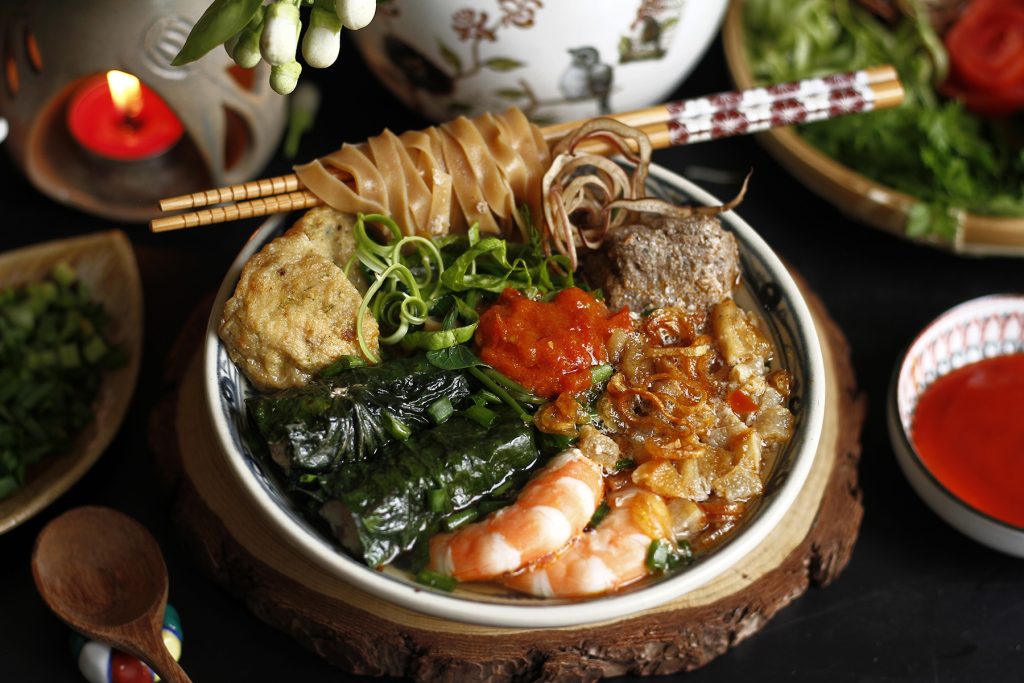
Ingredients
-
Red rice noodles (bánh đa đỏ) – 400 g
-
Ground freshwater crab (cua đồng xay) – 400 g
-
Pork ribs – 300 g
-
Ground pork – 150 g
-
Assorted toppings (fish cakes, pork fat, dried shrimp) – 100 g
-
Water spinach (rau muống) – ½ bunch
-
Tomatoes – 6
-
Wood ear mushrooms – 20 g
-
Wild betel leaves (lá lốt) – 10 g
-
Shallots – 10 g
-
Spring onion & sawtooth coriander (mùi tàu) – 10 g
-
Limes – 3
Nutritional Information
For: Meat-eater
Calories per serving: ~450–500 kcal
Key Nutrients:
1. Protein
Source: Crab, pork, dried shrimp, fish cake
Benefits: Builds and repairs tissues
2. Calcium & Minerals
Source: Freshwater crab
Benefits: Supports bone health and nervous function
3. Lycopene
Source: Tomatoes
Benefits: Acts as an antioxidant, supports heart and skin health
4. Iron
Source: Pork, wood ear mushrooms
Benefits: Prevents fatigue and supports oxygen transport
5. Dietary Fiber
Source: Water spinach, wild herbs
Benefits: Aids digestion and blood sugar control
1. Prepare the Crab and Pork Ribs
-
Rinse the pork ribs and parboil them for 2–3 minutes to remove impurities. Drain and rinse again.
-
Add ribs to a pot, cover with water, and simmer for 30–40 minutes. You can add a few grilled shallots (peeled) to enhance the aroma.
-
In a separate bowl, mix ground crab with water. Use your hands to squeeze and stir gently. Strain through a sieve over a pot to collect the crab liquid. Repeat this process 1–2 more times to extract all the meat.
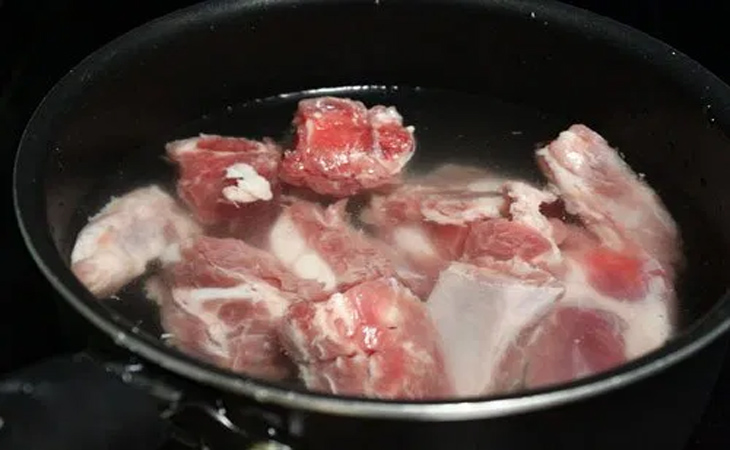
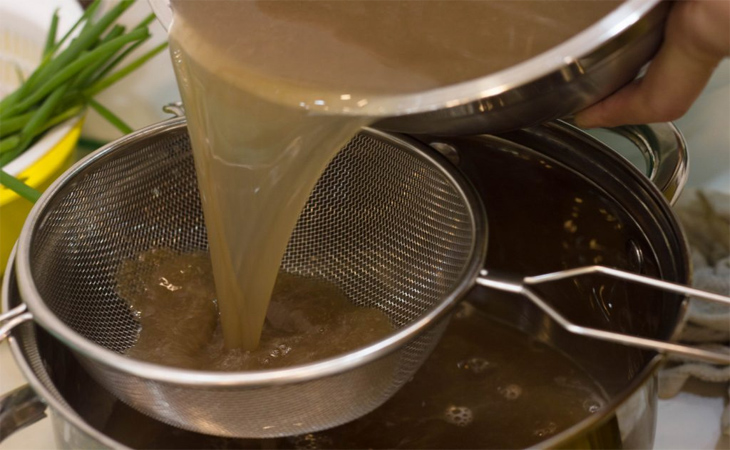
2. Prepare the Other Ingredients
-
Rinse and dice pork fat into small cubes.
-
Soak dried shrimp in warm water until soft, then rinse.
-
Soak wood ear mushrooms in warm water for 10–15 minutes, rinse, remove stems, and julienne.
-
Wash betel leaves. Reserve large leaves for wrapping, chop smaller or torn ones for mixing with minced pork.
-
Cut tomatoes into wedges. Peel and slice shallots. Chop scallions and culantro. Rinse water spinach and herbs, soak in salted water for 15–20 minutes, then drain.
-
If using dried noodles, soak in water for 5 minutes. For fresh noodles, rinse briefly with water.
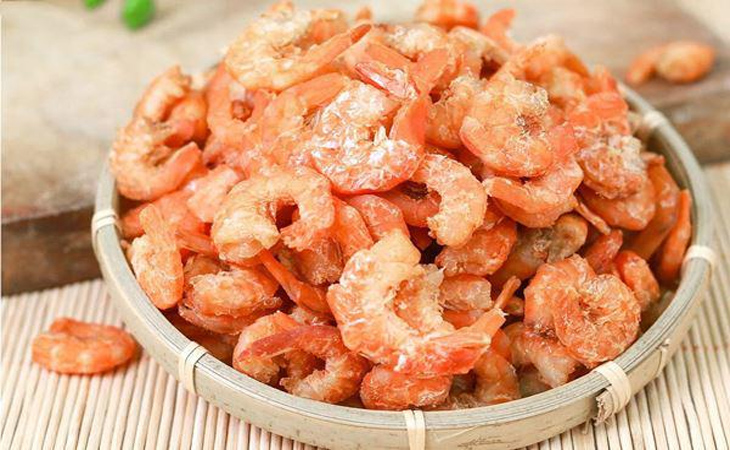
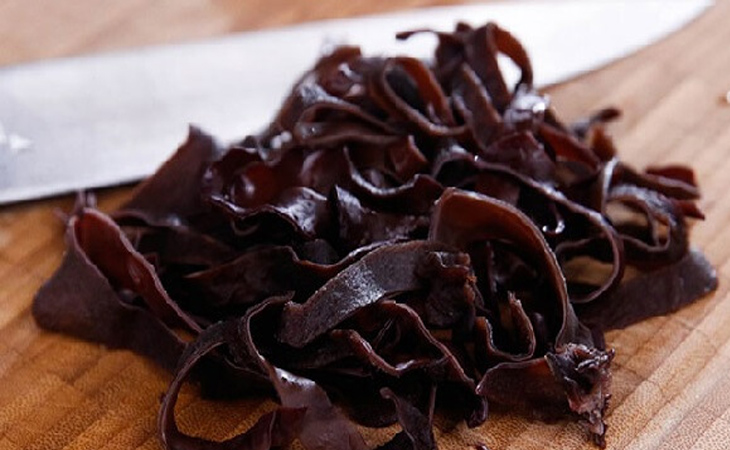
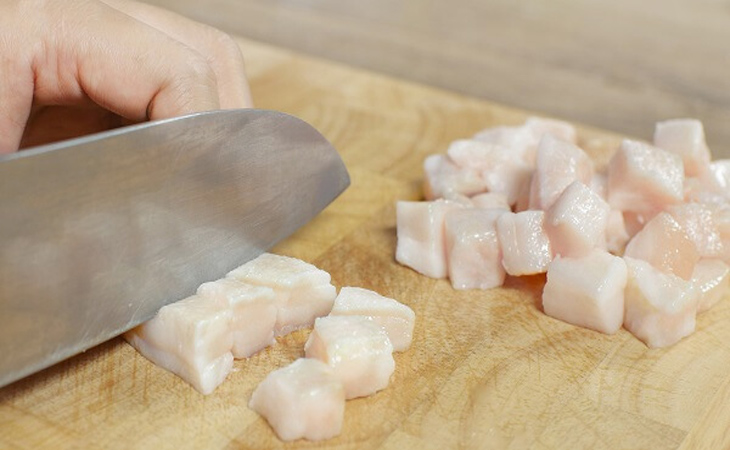
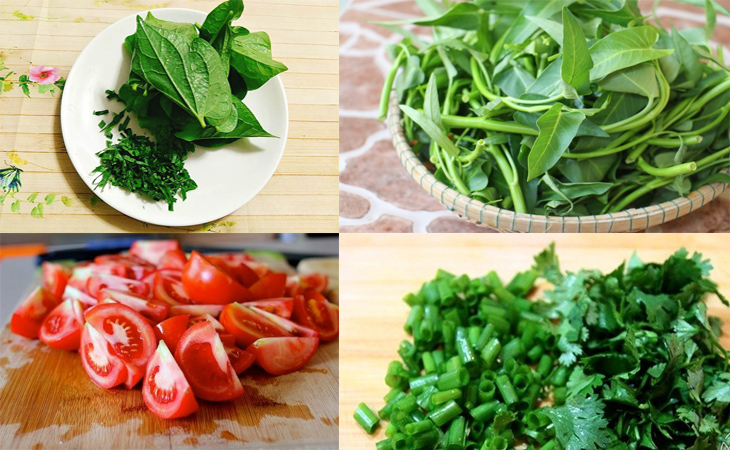
3. Cook the Crab Stock
-
Gently pour crab water into a pot, discard any sediment at the bottom. Add a pinch of salt and cook over medium heat.
-
Stir continuously until the crab starts to float and solidify. Then stop stirring to allow it to form crab cakes.
-
Once the crab cakes rise fully, scoop them out and set aside. Keep the stock for later.
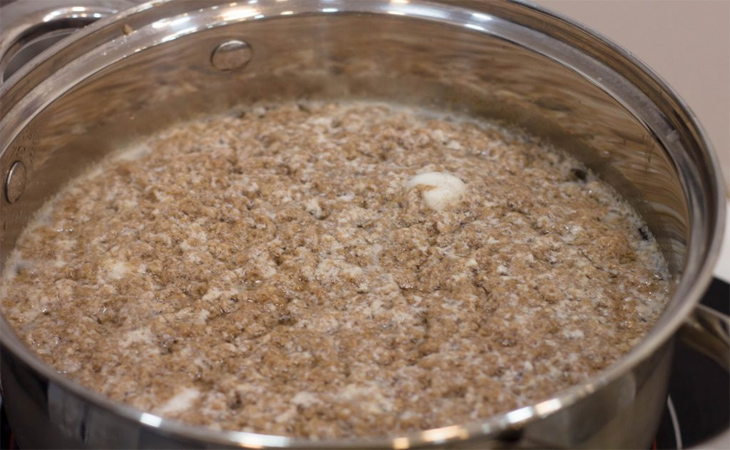
4. Make Betel Leaf Pork Rolls
-
Mix minced pork with chopped wood ear mushrooms, chopped betel leaves, pepper, ½ tsp seasoning powder, and fried shallots. Let it sit for 5 minutes.
-
Lay out a large betel leaf (shiny side down), place a spoonful of pork mixture in the center, and roll. Secure with a stem or toothpick.
-
Heat oil in a pan and fry the rolls until evenly golden.
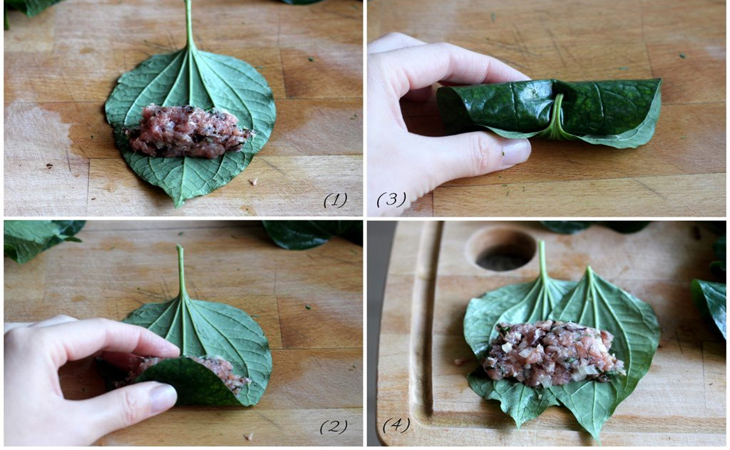
5. Boil Water Spinach
-
Boil water with a pinch of salt, add water spinach, and cook for 3–5 minutes until just tender. Transfer to a bowl of cold water to retain crispness.
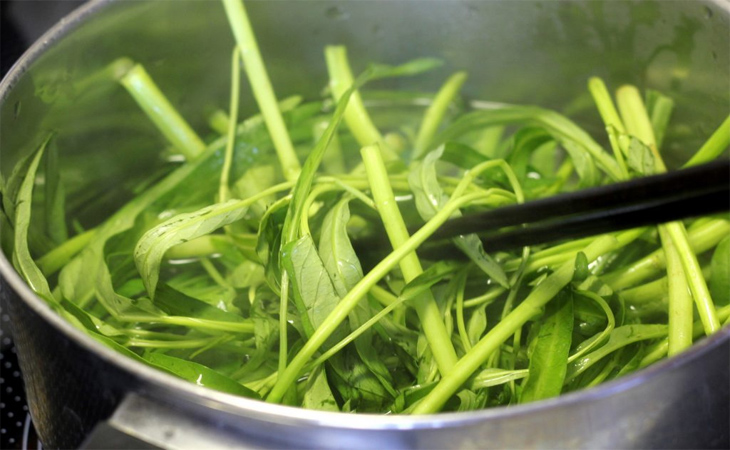
6. Cook Pork Fat and Fish Cakes
-
Render pork fat cubes in a pan over medium heat until golden and crispy. Set aside. Add sliced shallots to the fat and fry until golden, then remove.
-
Use about 15 ml of the rendered fat to sauté the crab cakes until fragrant. Add crispy fat and fried shallots. Set aside.
-
In the same pan, add more fat and sauté tomatoes until soft but still hold shape. Add a bit of fish sauce, then remove from heat.
-
Fry fish cakes in a little oil until golden on both sides. Slice into 1-cm thick pieces.

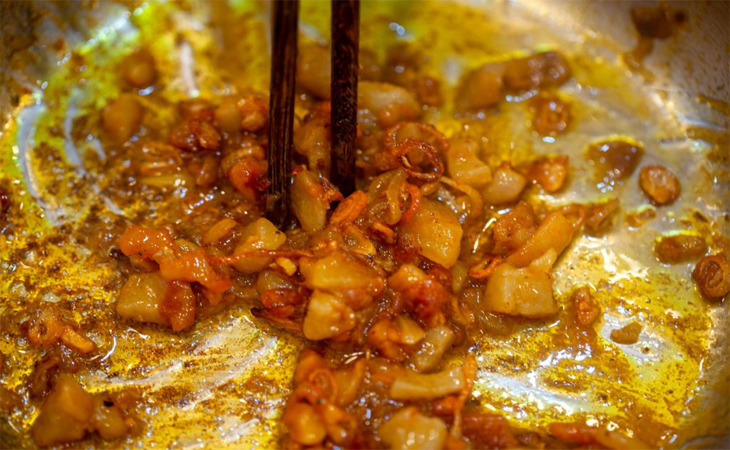
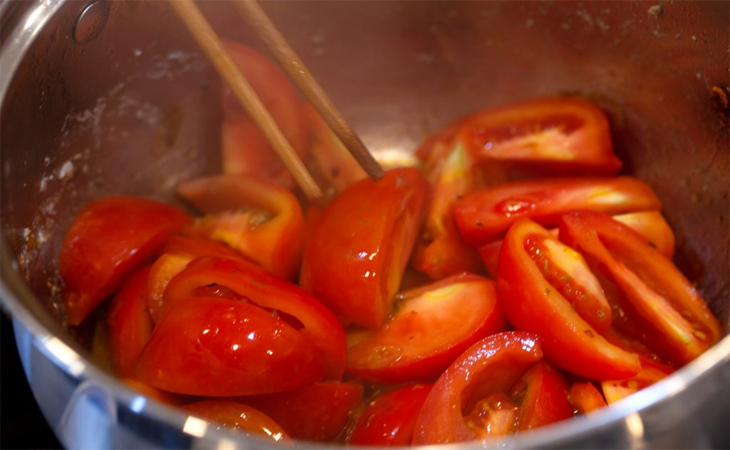
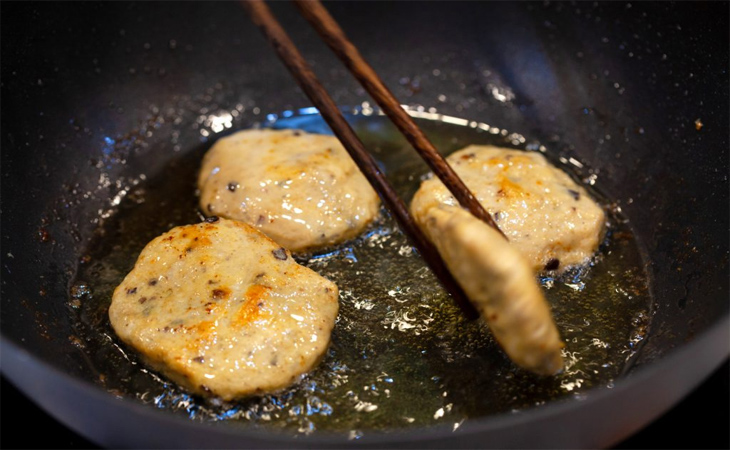
7. Prepare the Broth
-
Remove ribs from the pot. Combine the crab stock with the pork broth. Bring to a boil again.
-
Blanch soaked shrimp in the broth until tender. Add sautéed tomatoes and 2 tsp seasoning powder.
-
Briefly blanch the noodles in a separate pot of boiling water (do not use the broth to avoid cloudiness). Divide noodles into bowls.
-
Top each bowl with betel leaf rolls, fish cakes, water spinach, shrimp, sautéed crab cakes, fried shallots, and herbs.
-
For soup version: Pour hot broth over the toppings and serve with fresh herbs.
-
For dry version: Mix 30 ml fish sauce, 30 ml soy sauce, 30 g sugar, 50 ml water, and 25 ml lime juice to make the dressing. Toss 2–3 tsp of this sauce with the noodles. Serve with a small bowl of broth and satay if desired.
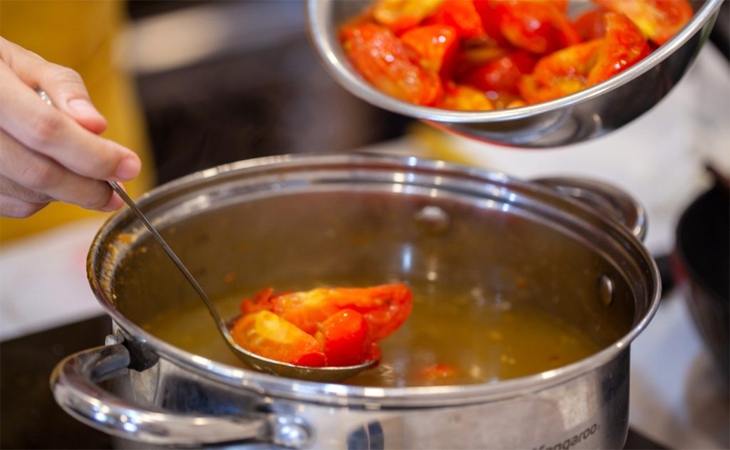
8. Finished Dish
The noodles are perfectly chewy without being mushy. The broth is rich in crab flavor, fragrant with sautéed crab and herbs, and beautifully complemented by betel leaf rolls, fish cakes, and vegetables.
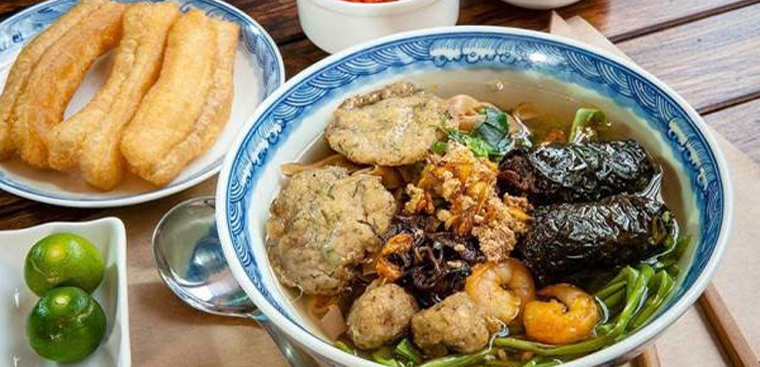
Crab Rice Noodle Soup – The Iconic Dish of the City of Red Flamboyant Flowers
The story of Hải Phòng Crab Noodle Soup begins in the early decades of the 20th century, when Hải Phòng—Vietnam’s major northern seaport—was thriving as a gateway for trade and industry. Amid the daily bustle of fishermen returning from the sea and market vendors setting up their stalls at dawn, a humble yet deeply flavorful dish emerged from the hands of local women: a bowl of rice noodles served in rich crab broth, garnished with vegetables and herbs from the surrounding countryside.
In those days, life in Hải Phòng revolved around the sea. Crabs and shellfish were plentiful, and families often saved small, imperfect crabs that couldn’t be sold at the market to make a hearty soup for breakfast. To accompany the crab broth, they used read rice noodle—flat, hand-cut rice noodles tinted a reddish-brown hue. The color came naturally from a blend of traditional rice varieties and a touch of lye water, which also gave the noodles their distinct elasticity. These noodles were dried under the open sky, allowing the sea breeze to imbue them with a subtle, salty fragrance.
Over time, Hai Phong Crab Noodle Soup evolved from a simple home-cooked meal into a signature dish of Hải Phòng. The recipe spread from coastal homes to street vendors, and from there to small eateries lining Cát Dài, Lạch Tray, and Cầu Đất—areas that became culinary landmarks of the city. Each cook added their own touch: some enhanced the broth with shrimp paste and fried shallots, others layered toppings such as boiled crab meat, fried tofu, chả lá lốt (betel leaf-wrapped meatballs), or crunchy morning glory stems. Yet the heart of the dish remained unchanged—the harmonious balance of the sea’s sweetness and the earth’s fragrance.
By the mid-20th century, as Hải Phòng developed into an industrial center, Hai Phong Crab Noodle Soup had already become a cultural icon. For the city’s workers, it was a comforting start to the day; for travelers, it was a symbol of Hải Phòng’s authenticity and warmth. Even today, locals say that to truly understand Hải Phòng, one must first taste its Crab Noodle Soup—a dish that embodies the city’s spirit: resilient, resourceful, and proudly connected to its roots.
Across Vietnam, no version quite replicates the flavor of the original. The broth’s depth, the noodle’s texture, and the faint briny note of the coastal air combine into something unmistakably Hải Phòng—a culinary heritage passed down through generations, preserving the essence of a port city where the land meets the sea.


